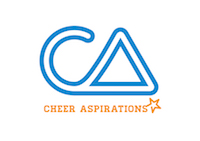Have you ever wondered what makes a cheerleading routine a certain level? How can someone quickly determine what level a cheerleading team is in just by looking at their routine for 5 seconds? Here is a quick and easy reference for coaches, parents or even ardent fans or cheerleading!
Brief History
Firstly, let’s begin with how cheerleading levels are established. Before levels are created, there was no clear set of guidelines, and the routine was judged purely based on creativity and the overall “wow” effect. However, this resulted in everyone aiming for more and more risky stunts, while the safety of the cheerleaders involved were compromised. This is where governing bodies such as the ICU (International Cheer Union) came in to classify all types of cheerleading skills into levels according to difficulty.
Based on the ICU, cheerleading ranges from Levels 0 to 6, with 0 being the beginner level to 6 being the most challenging. With each progressing level, more and more advanced skills can be performed. In this article, we will learn the differences in stunts, tumbling, tosses and pyramids at their different levels! (Note: This article is written based on the ICU cheer rules for 2019/2020)
Level 0: The Beginner
If a young cheerleader aspires to cheer, then Level 0 is a great place to start. All stunts at this level are at waist level only and must have a watchful spotter for each flyer. Tosses and cradles are also not allowed at this level. This is to keep cheerleaders focused on building up strong basics and strength first before progressing to more advanced skills!
In tumbling, cheerleaders can do basic skills like forward rolls, backward rolls and cartwheels.
When more than two stunt groups where the flyers are connected at waist level, then a level 0 pyramid is formed!
Level 1: The Foundation
In Level 1, all stunts are allowed up to prep level (at the bases’ shoulder level). If one leg stunts are performed, it must be below prep level. It is interesting to note that teams may perform one leg stunt on prep level, provided that the flyer is braced by a bracer on the ground.

Cheerleader performing a braced liberty
Most basic tumbling skills on this level are allowed, as long as there is physical contact to the floor throughout the skill. This includes forward rolls, backward rolls, cartwheels, round offs and walkovers.
Also, if a team does not perform any sort of toss in the whole routine, it is pretty safe to say that the team is a Level 1 team. This is because teams in this level are not allowed to toss flyers up into the air. However a straight cradle from a stunt is allowed to be performed.
Pyramids in this level will have extension stunts, where the flyer is lifted to the height of the bases’ arms fully extended, as long as it is braced. Pyramids also allow braced one leg stunt at prep level.

Braced extension pyramid
Level 2: Extending the Basics
Look out for two-legged extension stunts, cradles from extension and liberty stunt sequences on prep level, which are pretty much the bread and butter of this level. Half twisting stunts and transitions are allowed as well. More advanced teams in Level 2 usually mount their flyer from an inversion skill such as a handstand or a walkover.

Liberty stunts with scales at prep level
Many teams will perform standing back handsprings and roundoff back handsprings at this level.
Basket tosses in cheerleading are often breathtaking! So it’s a big yay that basket tosses are introduced in level 2, where teams can perform a straight ride basket toss.
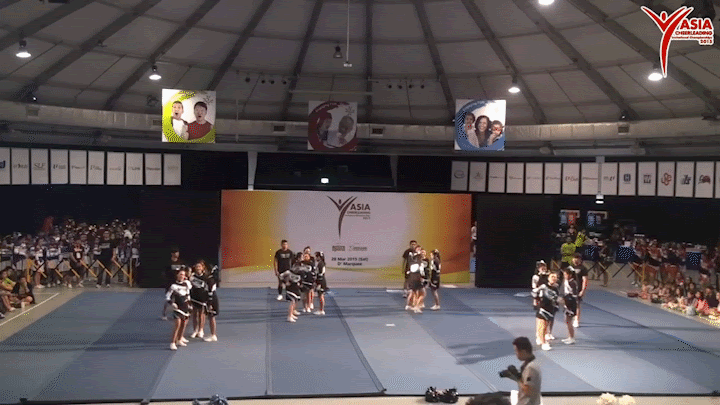
Straight ride basket tosses
Source: https://www.youtube.com/watch?v=yZ4x6rp5WCI
Moving on to level 2 pyramids, extended one-leg stunts that are braced are a popular skill. Skills that are allowed in level 2 stunts can also be incorporated creatively into level 2 pyramid sequences!
Level 3: Twists and Turns
Stunts in this level are beginning to look more exciting with extended liberties and full twisting stunts at prep level. A single twist added to a cradle is a staple in level 3 stunt sequences. This is also the level that we will see skills like tic tocs where the flyer switches her legs on a stunt. There’s also switch-ups where flyers switch their standing leg while going up on the stunt. Most excitingly, inversions (when a flyer is flipped) on stunts are legal at this level!

Extended liberty with a scale stretch
We will begin to see running tumbling passes that end with a tuck and standing back handspring series. Jumps, which are usually performed in isolation in previous levels, are now allowed to combine with a back handspring.
Flyers in this level can perform a single trick during basket tosses, such as a toe touch, pike or a single twist.
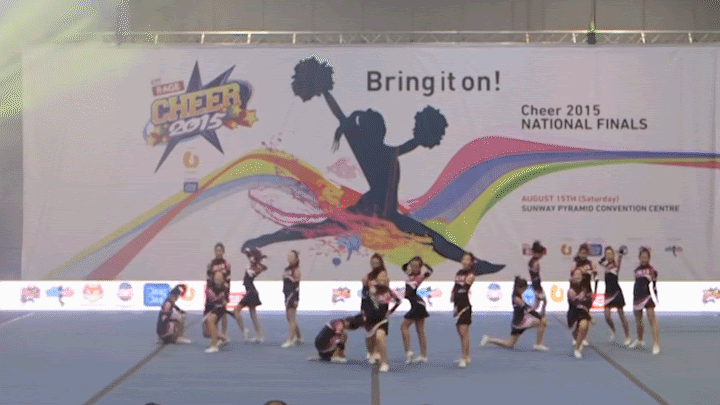
Pike basket tosses
Source: https://www.youtube.com/watch?v=RZBU_TfIPIU
Meanwhile, most level 3 pyramids incorporate release moves that are braced from both sides of the flyer. The audience will also see skills like inversions and braced full twisting to extension stunts.
Level 4: Double Trouble
Most Level 4 teams have revved up the skills they have mastered in Level 3 to more advanced skills like switch-ups to extensions, tic tocs from below prep to extensions and released inversion skills. Twisting of 1 ½ twists to prep and a full twist to an extension are allowed here as well. We will also see double twisting cradles from two-legged stunts and single twisting cradles from one-legged stunts.
In level 4, tumbling passes that end in layouts, which is a hollow body position when a tumbler performs a flip. If you notice a team performs a standing back tuck, they are usually a level 4 team as well. Teams also sometimes combine their jumps to a back handspring followed by a tuck.
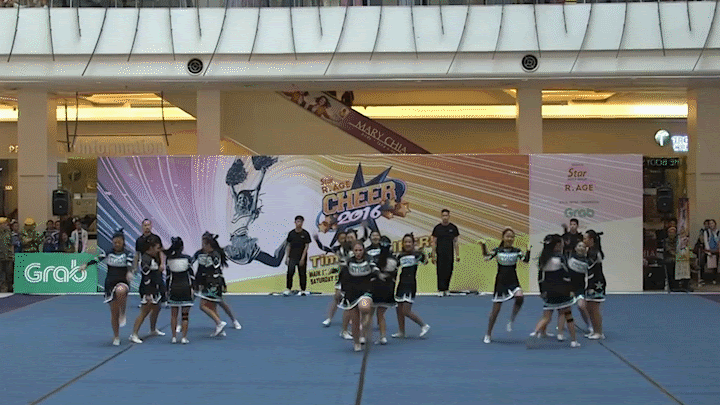
Kick single basket tosses
Source: https://www.youtube.com/watch?v=_Mis-avBbuE
Basket tosses in this level can now feature 2 tricks such as kick single and double twisting tosses.
Pyramids in level 4 are starting to seem like flyers are flying in every direction with skills like released inversions that are braced on both sides and release moves that are braced by one side.
Level 5: The Elites
Teams in this level are constantly pushing the limits with extended stunts with a double twist, released inversions to extensions and tic tocs to extensions. Have I mentioned that all skills end in extensions at the level? More elite teams will even attempt to combine many different skills to add flair and complexity to their sequence. These elite stunt sequences often end with a double twist to cradle from single-legged stunts.
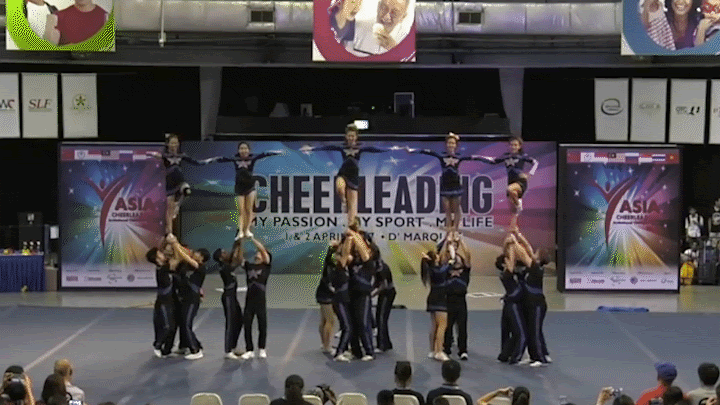
Level 5 pyramid sequence
Source: https://www.youtube.com/watch?v=OGtRG7iXSFY
Tumbling passes in this level usually end with a single layout full (where the cheerleader flips and twists at the same time). Some teams even add jumps to a tuck sequence to add to the wow factor!
Level 5 basket tosses usually involve 3 tricks or more including the iconic kick doubles which involve a kick in the air and the flyer twisting twice!
Pyramids at this level are usually very dynamic and exhilarating with braced release inversions, sometimes with twisting involved or changing bases!
Level 6: The Ultimate Level!
This is it! Level 6 stunts feature most of the skills in level 5 but with free flipping mounts and dismounts. Here you will see skills like rewinds which is a standing backflip into a stunt. Rewinds even can be done with a back handspring or round off going into the rewind!
In the ICU rules, tumbling in level 6 routines are identical with level 5 routines with tumbling passes usually ending in single full.
The most unique trait of tosses in this level are the flipping tosses. Back tucks, arabians (a ½ twist while flipping) and x-outs are some of the examples of flipping tosses. Sometimes fly away tosses (when the flyer is tossed from a group of bases to another) are performed as well.
The most recognizable feature in level 6 pyramids are the 2 ½ high structures, where the middle tier flyers are lifting top tier flyers! Level 6 also never fails to wow with many variations of free flips and twists to mount and dismount the pyramid!

CAs performance team performing a 2-2-1 pyramid for a corporate event
Not all skills are listed here and many cheerleading teams around the world are still pushing for more and innovative skills, causing the rules to change a little every year! Hopefully with this quick guide, you will be identifying cheerleading skills like a pro!
References:
https://cheerunion.org.ismmedia.com/ISM3/std-content/repos/Top/docs/ICU_TeamCheer_Rules_2018.pdf
https://www.varsity.com/wp-content/uploads/2019/06/VAS_Elite_ScoringRubric_19.20.pdf
https://www.varsity.com/news/want-cheerleader-star-cheerleading/
